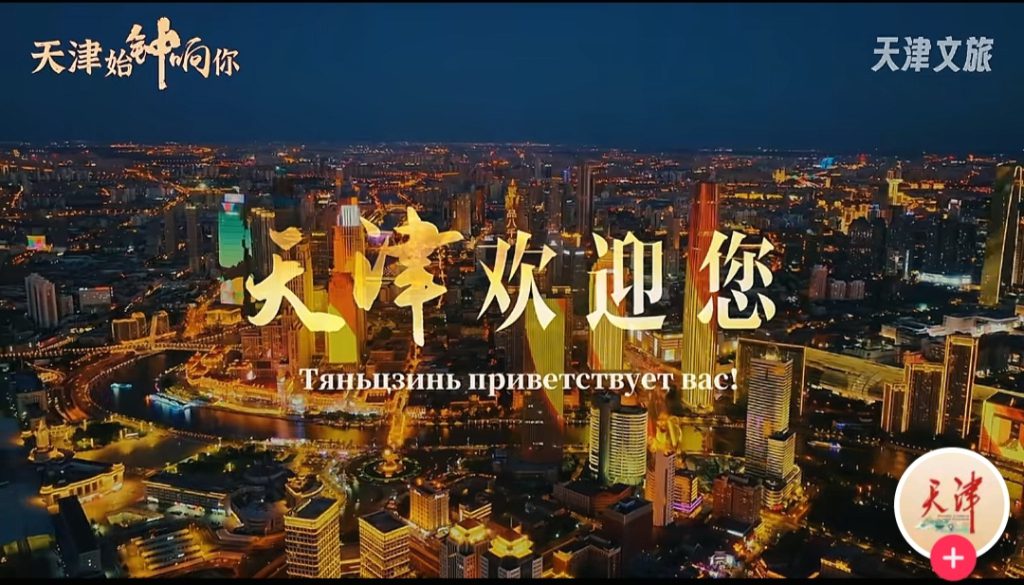
Hi, I’m IPRLaoliu! Today I’ll take you on a tour of my city—Tianjin, China.Welcome to Tianjin, China!
This August, the evening breeze in Tianjin seems to carry a special sense of anticipation. Soon, representatives from member states of the Shanghai Cooperation Organization (SCO) will gather here for a significant dialogue on development. Landmark buildings along the Haihe River, like pearls adorning the city, shine with unique brilliance, showcasing Tianjin’s extraordinary appeal as an international metropolis. History and modernity blend seamlessly here, composing a harmonious symphony.
I. Historical Roots: Six Centuries of Change
Tianjin’s history dates back to the Neolithic Age, when ancient settlers thrived here. During China’s Warring States period, it was a contested region among the states of Yan, Zhao, and Qi, with the Haihe River witnessing countless clashes of armies.
By the Sui and Tang dynasties, in the 4th year of Emperor Yang of Sui’s reign (608 AD), the Yongji Canal was excavated, connecting the Grand Canal. The section from Tianjin to Linqing became a vital waterway for transporting troops, grain, and military supplies. After the Jin dynasty, canal transport grew increasingly busy, moving large quantities of grain and goods from southern China to Beijing. Tianjin gradually evolved into a key port hub.
In 1214 AD (the 2nd year of the Zhenyou era of the Jin dynasty), the establishment of “Zhigu Stockaded Village” marked the earliest recorded name in Tianjin’s urban development. In 1282 (the 19th year of the Zhiyuan era of the Yuan dynasty), Emperor Kublai Khan ordered Luo Bi, Zhu Qing, and Zhang Xuan to transport 46,000 shi of grain north via sea routes on 60 flat-bottomed ships. They arrived in Zhigu the following March, initiating the era of maritime grain transport. In 1316 (the 3rd year of the Yanyou era), Zhigu was renamed “Haijin Town.”
In 1400 (the 2nd year of the Jianwen era of the Ming dynasty), Prince Zhu Di of Yan led his army across the river at Haijin Town to challenge his nephew Emperor Jianwen for the throne. After ascending as emperor, he bestowed the name “Tianjin,” meaning “the place where the Son of Heaven crossed.” In 1404 (the 2nd year of the Yongle era), the “Tianjin Guard” (Tianjin Wei) was formally established, marking the city’s official founding and its rise on the historical stage.
During the Qing dynasty, Tianjin’s status continued to rise. In 1725 (the 3rd year of the Yongzheng era), Tianjin Guard became Tianjin Zhou (a prefecture), later upgraded to a directly administered prefecture governing Wuqing, Qingxian, and Jinghai counties. By 1731 (the 9th year of the Yongzheng era), Tianjin Prefecture oversaw six counties and one sub-prefecture, becoming the capital of the metropolitan region. However, the Opium War in 1840 shattered Tianjin’s peace. British warships invaded the Dagu Fort, and subsequent unequal treaties forced Tianjin to open as a trading port. Western powers established concessions, turning Tianjin into a semi-feudal, semi-colonial city. Yet, it simultaneously became a frontier of openness in northern China and a base for the Westernization Movement. Pioneering advancements in military modernization, railways, telegraphs, telephones, postal services, mining, modern education, and judiciary helped Tianjin grow into China’s second-largest industrial and commercial city and the largest financial and trade hub in the north.
II. Urban Landmarks: Weaving History with Modernity
(1) The Century Clock: Guardian of Time
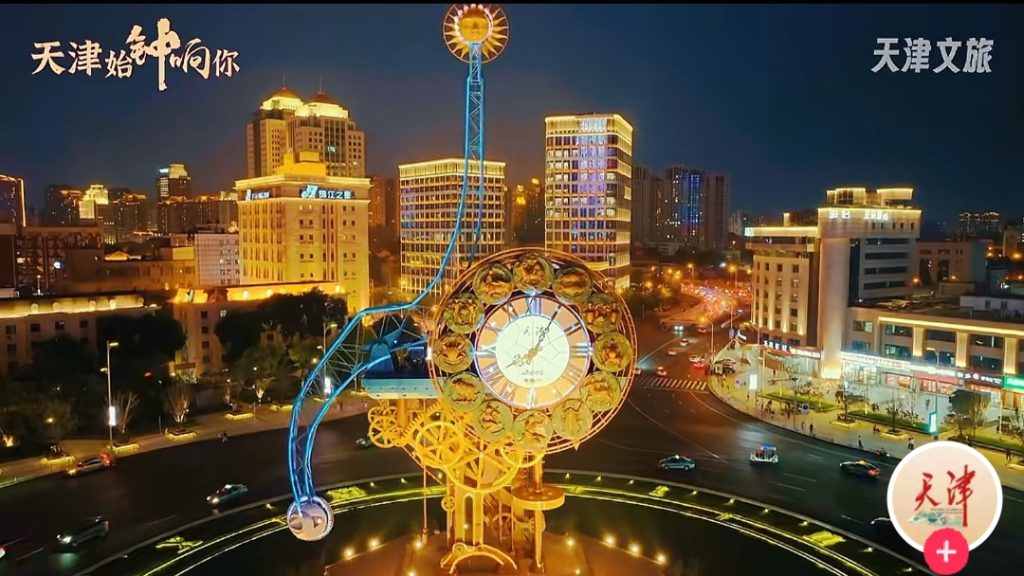
Standing by the Haihe River, the Century Clock resembles a silent “ambassador of time.” Adorned with 12 crystal hour markers, each tick echoes Tianjin’s past and present. Intricate gear and track motifs at its base pay homage to its location—the former Tianjin Railway Station. Once a hub for steam trains, it now witnesses the roar of high-speed rail, reflecting changing eras. Restored for the SCO Summit, its iconic sun-and-moon dial gleams anew, while smart light projections vividly showcase Tianjin’s cultural heritage. Locals say lovers meet “when the clock strikes,” and soon, each tick will resonate with international significance, sharing Tianjin’s charm with the world.
(2) Jiefang Bridge: A Legend Forged in Steel
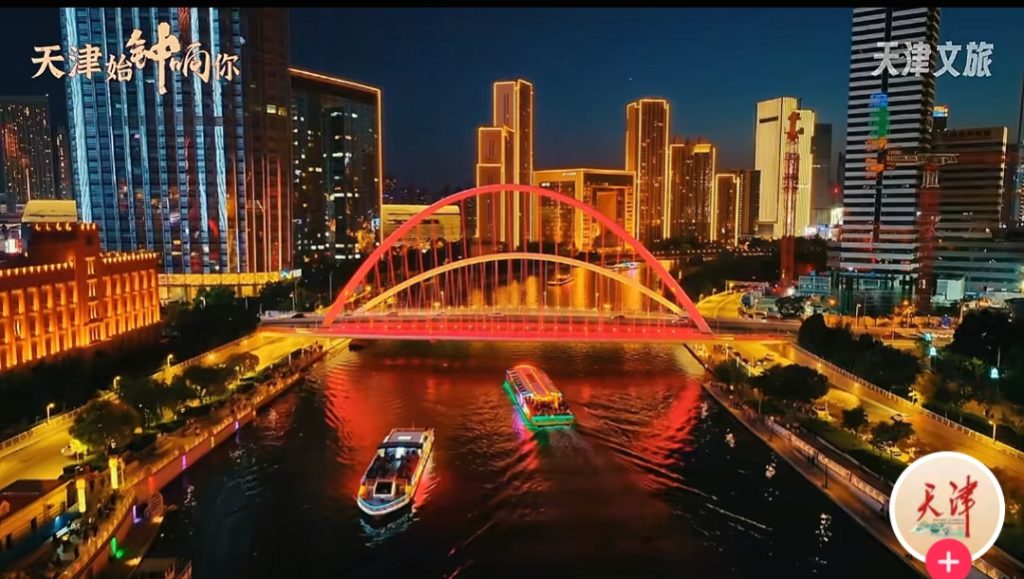
Spanning the Haihe beside the Century Clock, Jiefang Bridge—originally “Wanguo Bridge” (Bridge of Ten Thousand Nations)—is a “living fossil” of Chinese bridge engineering. Built with the same steel as the Eiffel Tower, it is China’s only double-leaf bascule bridge. Its mechanical leaves once lifted high to let ships pass. At night, neon lights outline its steel frame in vibrant colors, harmonizing solemnity with the glittering skyline. Strolling across it, one feels both historical weight and modern vitality. When its leaves rise, it seems to open a portal between past and future, witnessing Tianjin’s journey toward modernity.
(3) Gold Street and Quanye Bazaar: Witnesses to Commercial Bustle
A short walk from Jiefang Bridge leads to Gold Street, one of Tianjin’s liveliest commercial avenues. Shops line the street, from global brands to local boutiques. Quanye Bazaar, an iconic building here, holds countless memories for Tianjiners. Built in 1928 with eclectic architecture, it stands grandly. Inside, it feels like a commercial wonderland—abundant goods, warm service. Visitors find Tianjin souvenirs, traditional foods, and a vibrant atmosphere. For decades, it has been both a shopping paradise and a symbol of Tianjin’s commercial culture. Today, it remains a top attraction, drawing global tourists
(4) Tianjin Eye: The City’s Romantic Icon
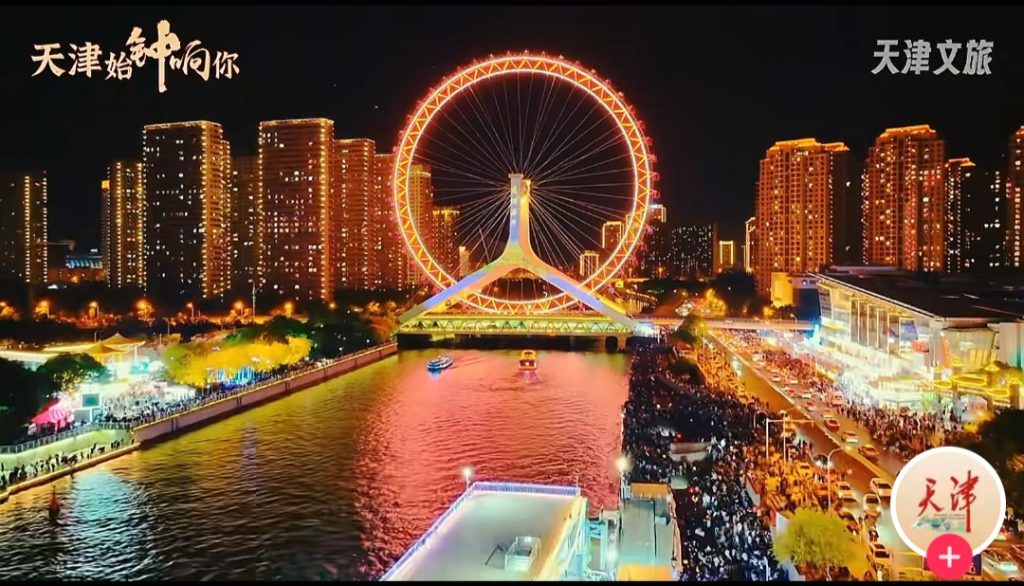
The 120-meter Tianjin Eye Ferris wheel glows like a jewel over the Haihe. A 30-minute rotation offers panoramic night views. Each capsule features interactive ceiling and floor screens projecting starry skies and cherry blossoms, creating a dreamy ambiance. Charging ports and Bluetooth allow personalized music. The Eye has become Tianjin’s glittering name card—ideal for dates or family outings, offering unforgettable moments to admire the city’s charm from above.
III. Themed Quarters: Cultural Tapestry
(1) Italian Style Area: “Little Rome” of the East
Heading north along the Haihe leads to the exotic Italian Style Area. Its 137 Italianate buildings—Gothic spires, Baroque reliefs, Romanesque columns—form Asia’s best-preserved Italian architectural cluster. Former residences of luminaries like Liang Qichao and Cao Yu whisper tales of the past. Film locations (e.g., The Founding of a Republic, The Message) add artistic flair. Authentic Italian pizza and pasta share streets with German beer halls and Goubuli steamed buns, creating a fusion of flavors. Strolling here feels like a Mediterranean escape.
(2) Five Great Avenues Cultural Tourism Zone: “Museum of Global Architecture”
Dubbed the “Museum of Global Architecture,” the Five Great Avenues feature over a thousand villas in Gothic, Baroque, Byzantine, English Country, and Sino-Western styles. Beyond artistic value, they hold rich history. Ornate railings and stained glass dazzle in sunlight—each villa an artwork. Countless modern celebrities lived here; pivotal historical events unfolded. Today, it’s a top cultural destination, blending heritage with trendy eateries and creative shops. Walking its streets immerses visitors in architectural splendor, reflecting Tianjin’s inclusive spirit.
(3) Ancient Culture Street: Essence of “Jinmen Guli”
Tianjin’s Ancient Culture Street, also called “Jinmen Guli” (Ancient Hometown by the Gate), marks the city’s origin. On December 23, 1404, Tianjin was established as a guard post here. Today, its 600-meter main street hosts time-honored Chinese brands and intangible cultural heritage shops. Walking through feels like stepping into ancient times, surrounded by tradition. Discover folk art “Four Treasures”: Yangliuqing woodblock prints, Zhang’s Clay Figurines, Wei’s Kites, and Liu’s Brick Carvings. Taste the “Three Culinary Wonders of Tianjin”—Goubuli steamed buns, Guifaxiang fried dough twists, and Ear-Hole Fried Cake—plus jianbing (savory crepes), baga porridge, and tofu pudding. Blending tradition with new businesses, the street pulses with renewed vitality, captivating visitors at every step.
IV. Culinary Heaven: Tianjin on the Tip of the Tongue
Tianjin’s rich culinary culture offers diverse flavors steeped in local memory. Locals’ passion for food shines in ubiquitous breakfast stalls and street carts. Each dawn, aromas fill alleys: jianbin, fried cakes, gaba vegetable, tofu pudding, fried dough rolls, wontons, and millet gruel entice passersby. Jianbing—a thin mung-bean crepe with egg, scallions, sesame, crispy dough, and sauce—epitomizes Tianjin’s cuisine. Fried cakes boast crispy shells and sweet fillings (red bean, sugar). Gaba vegetable—sliced mung-bean and millet crepes in broth with cilantro and chili oil—is savory and smooth.
Beyond breakfast, signature dishes abound: Laobao San (stir-fried pork liver, kidney, and meat slices, glossy and savory); Zengbeng Carp (whole fish fried crisp, drenched in sweet-sour sauce). Seafood is unmissable: Tianjin’s Bohai Bay location ensures fresh fish, shrimp, crab, and shellfish, prepared steamed, braised, or spicy-fried.
V. Contemporary Development: Vitality Meets Opportunity
(1) New Engines of Economic Growth
As a national central city and among China’s first coastal open cities, Tianjin plays a vital economic role. It is a national hub for advanced R&D, northern international shipping, financial innovation, reform piloting, and the Bohai Rim’s economic center. Recently, Tianjin prioritized the service sector while advancing modern urban agriculture and industries like equipment manufacturing, automobiles, petrochemicals, aerospace, biomedicine, and new energy. It is also a key node on the China-Mongolia-Russia Economic Corridor, a strategic pivot on the Maritime Silk Road, a Belt and Road junction, the nearest eastern start of the Eurasian Land Bridge, and northern China’s largest port city. In 2024, Tianjin’s GDP reached 1.802432 trillion yuan, growing 5.1% year-on-year (at constant prices), accelerating by 0.8 percentage points, showcasing robust economic vitality.
(2) Breakthroughs in Technological Innovation
Tianjin has made remarkable strides in tech innovation. Its universities and research institutes provide strong talent and technical support. Recent R&D investments in AI, biomedicine, and new energy yielded key results. For example, Tianjin firms developed internationally advanced AI algorithms/products used in healthcare, transport, and finance. Biomedical teams achieved breakthroughs in drug R&D and gene therapy, advancing public health. Innovation platforms, startup competitions, and exchange events attract enterprises and talent, fostering a dynamic ecosystem.
(3) New Platform for International Exchange
Hosting the SCO Summit offers Tianjin a prime stage to showcase its charm and strengthen global ties. Representatives will discuss development strategies and seek cooperation. The summit elevates Tianjin’s global influence, boosting exchanges in economy, culture, and technology. With greater openness, Tianjin welcomes international enterprises and talent, accelerating its global integration. The city also engages in sister-city partnerships worldwide, enhancing mutual understanding through cultural and economic exchanges.
Conclusion
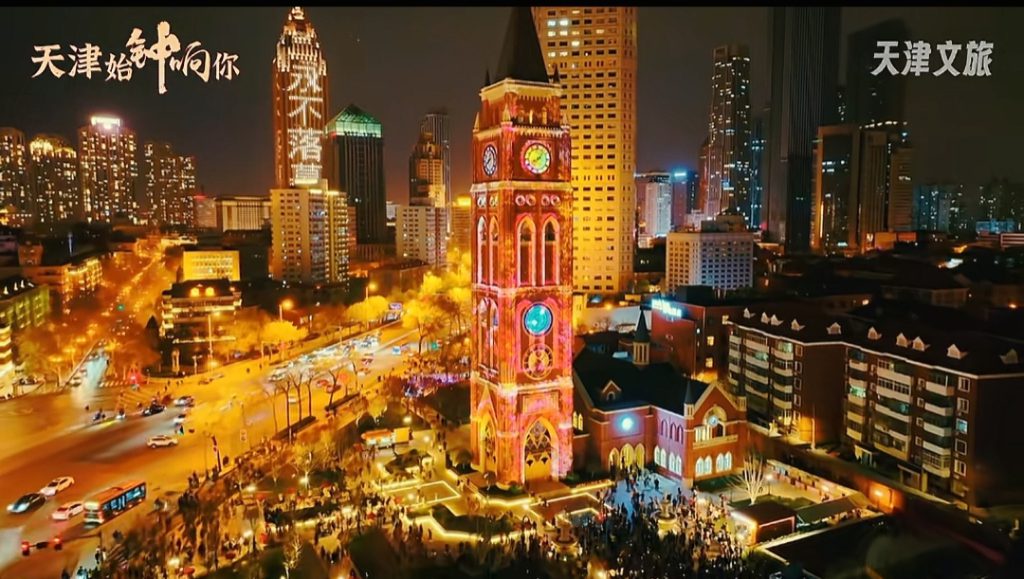
Tianjin—this city by the Haihe—resembles a tome of history, each page filled with stories, and a vibrant canvas of diverse charm. Steeped in culture yet pulsing with modern energy, it blends past and present, East and West, tradition and trend. With open arms, Tianjin invites friends worldwide to co-write new chapters of progress. Empowered by the SCO Summit, Tianjin will shine brighter on the global stage, contributing to peace and development.
Special Note:
The visuals in this article are sourced from the official video released by the Tianjin Culture and Tourism Bureau (TJCTB).
Scan the QR code below to watch the full video on Douyin (TikTok’s Chinese counterpart).
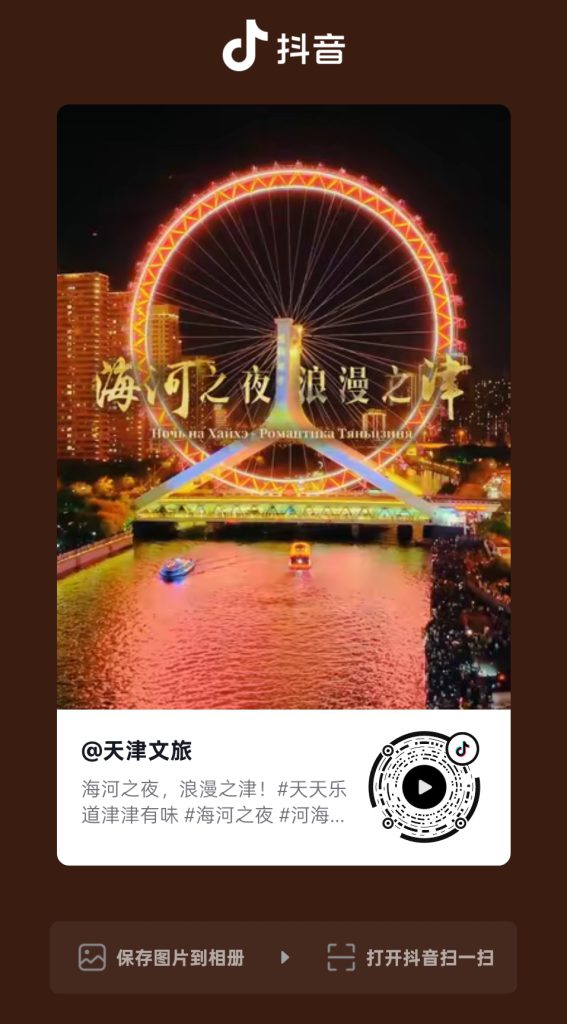
Tianjin—this dynamic city cordially invites you to:
Explore its wonders,
Settle in its vibrant communities,
Launch your entrepreneurial ventures,
Invest in its promising future.
With its vast market and abundant opportunities,
We eagerly await your arrival!
—IPRLaoliu